Abstract
OBJECTIVES: This study examined how immunization-related beliefs, attitudes, and perceived control mediate up-to-date immunization among various sociodemographic groups. METHODS: Statewide estimates of immunization rates among children up to the age of 2 years were obtained via a multistage cluster sample. In-person interviews were conducted with 4832 parents. Information about immunization was obtained from official records or from health care providers. RESULTS: Differences in immunization among sociodemographic groups were mediated by beliefs about objective barriers to immunization, protection, medical contraindication, safety concerns, distrust, and natural immunity. Protection beliefs contributed to positive attitudes toward immunization; beliefs in natural immunity and safety concerns contributed to negative attitudes. Beliefs about objective barriers, distrust, safety concerns, and medical contraindications influenced perceived control over immunization. Positive attitudes and a strong sense of control contributed to higher immunization rates. CONCLUSION: These findings provide a basis for efficient educational campaigns by specifying which beliefs should be bolstered (because they facilitate proper immunization) and which should be targeted for change (because they hinder proper immunization) in various sociodemographic groups.
Full text
PDF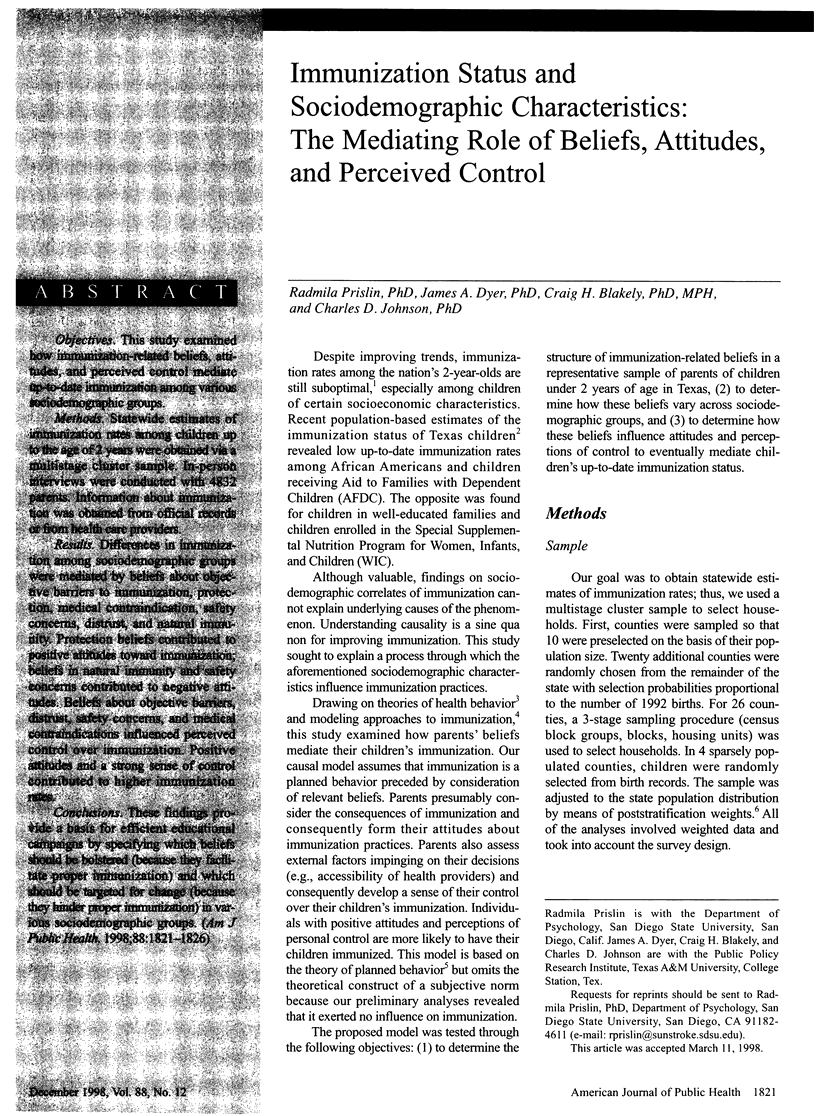
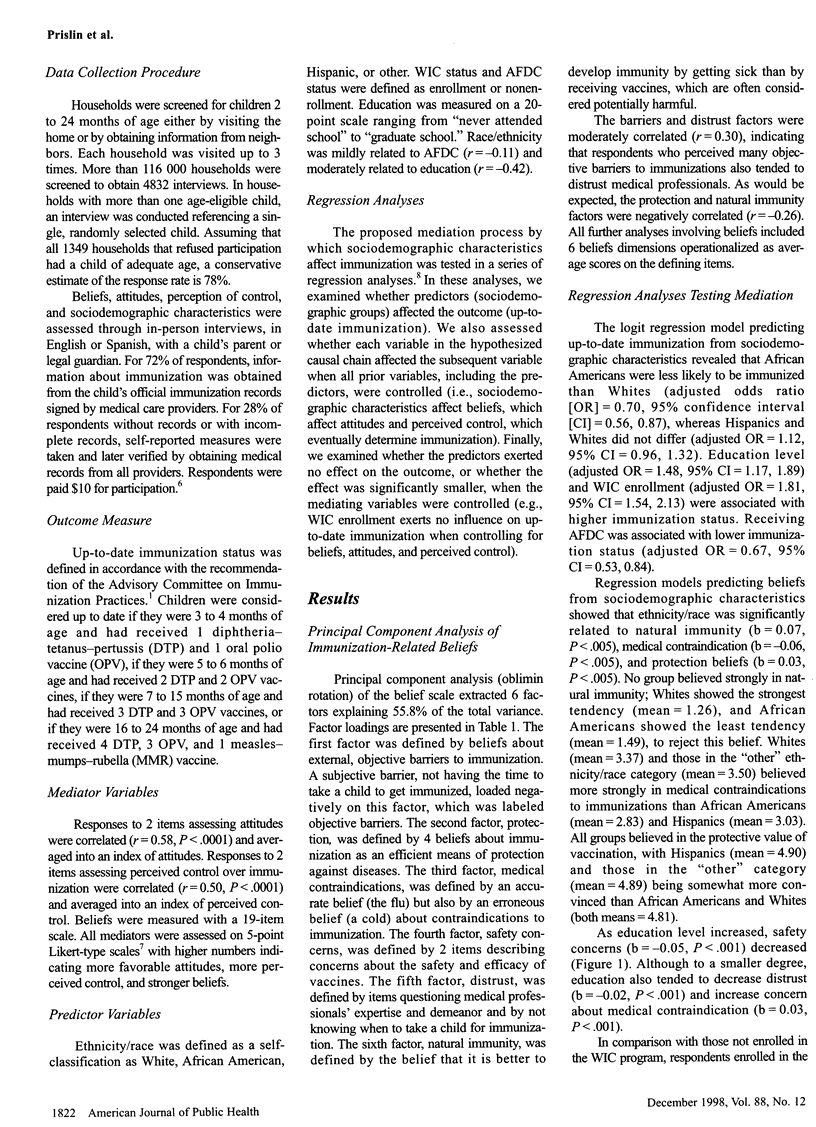
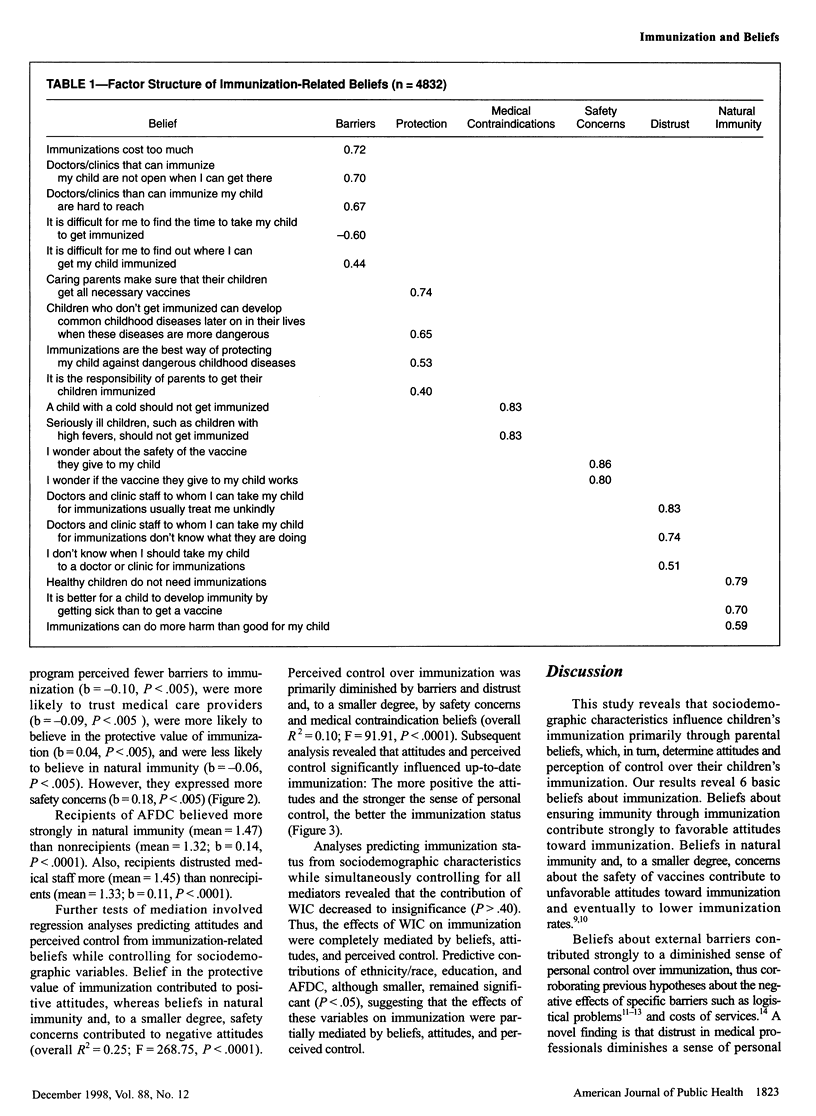
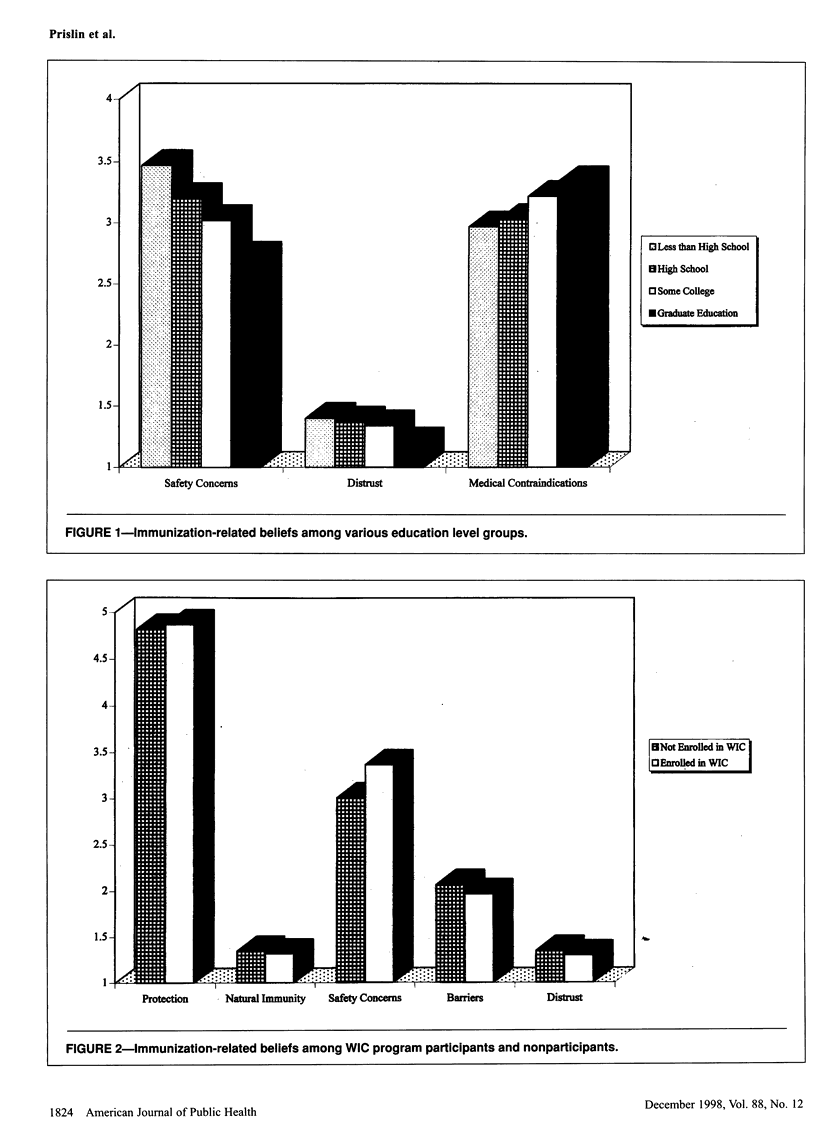
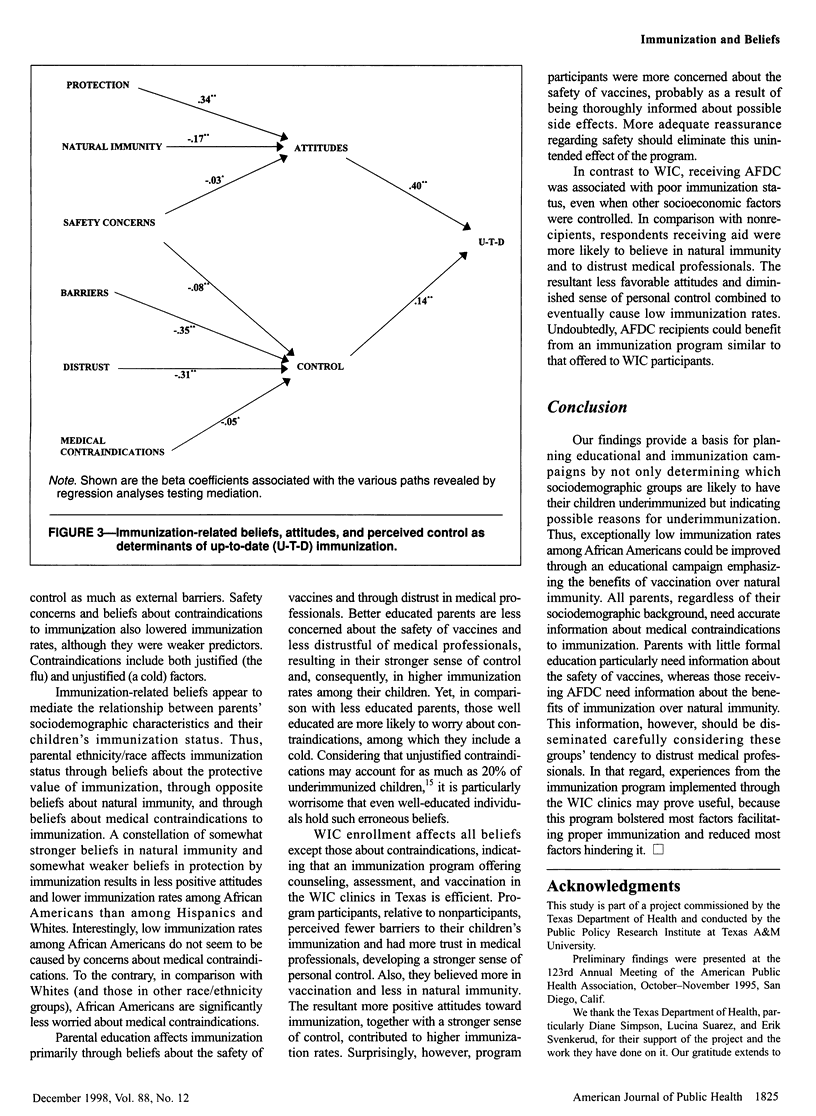
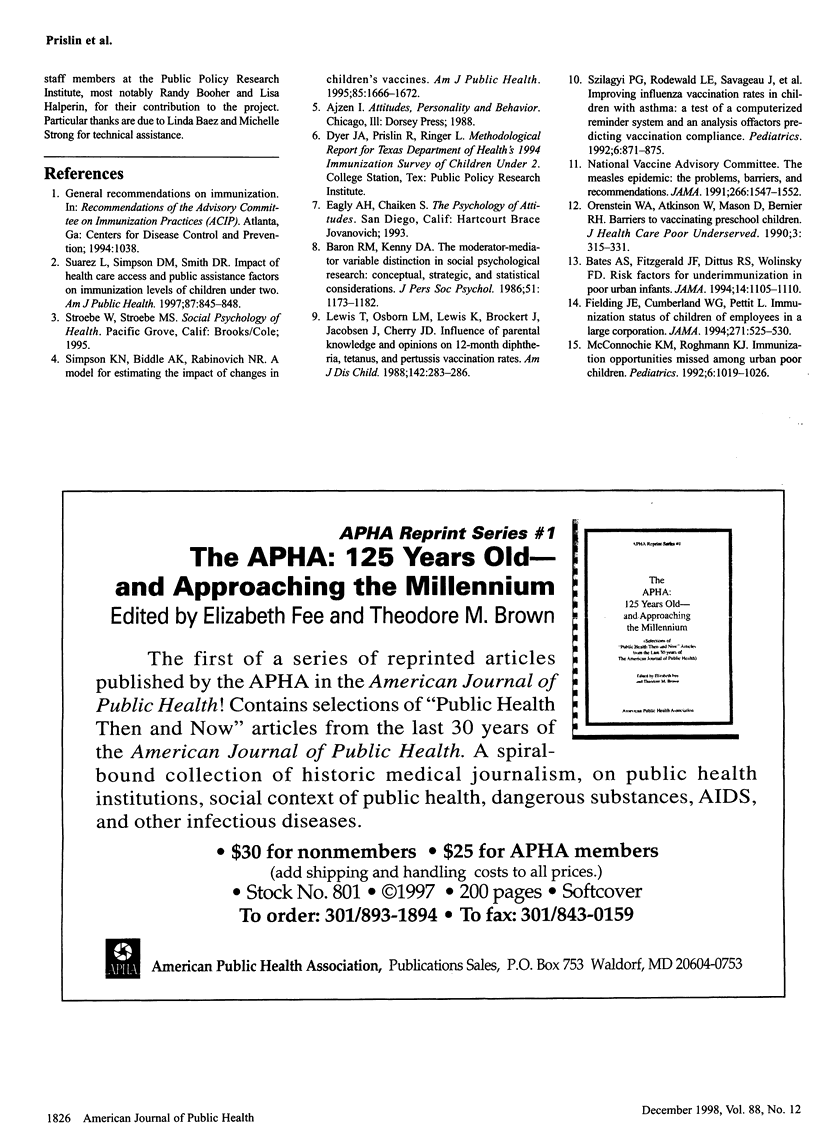
Selected References
These references are in PubMed. This may not be the complete list of references from this article.
- Baron R. M., Kenny D. A. The moderator-mediator variable distinction in social psychological research: conceptual, strategic, and statistical considerations. J Pers Soc Psychol. 1986 Dec;51(6):1173–1182. doi: 10.1037//0022-3514.51.6.1173. [DOI] [PubMed] [Google Scholar]
- Bates A. S., Fitzgerald J. F., Dittus R. S., Wolinsky F. D. Risk factors for underimmunization in poor urban infants. JAMA. 1994 Oct 12;272(14):1105–1110. [PubMed] [Google Scholar]
- Fielding J. E., Cumberland W. G., Pettitt L. Immunization status of children of employees in a large corporation. JAMA. 1994 Feb 16;271(7):525–530. [PubMed] [Google Scholar]
- Lewis T., Osborn L. M., Lewis K., Brockert J., Jacobsen J., Cherry J. D. Influence of parental knowledge and opinions on 12-month diphtheria, tetanus, and pertussis vaccination rates. Am J Dis Child. 1988 Mar;142(3):283–286. doi: 10.1001/archpedi.1988.02150030053018. [DOI] [PubMed] [Google Scholar]
- McConnochie K. M., Roghmann K. J. Immunization opportunities missed among urban poor children. Pediatrics. 1992 Jun;89(6 Pt 1):1019–1026. [PubMed] [Google Scholar]
- Orenstein W. A., Atkinson W., Mason D., Bernier R. H. Barriers to vaccinating preschool children. J Health Care Poor Underserved. 1990 Winter;1(3):315–330. doi: 10.1353/hpu.2010.0324. [DOI] [PubMed] [Google Scholar]
- Simpson K. N., Biddle A. K., Rabinovich N. R. A model for estimating the impact of changes in children's vaccines. Am J Public Health. 1995 Dec;85(12):1666–1672. doi: 10.2105/ajph.85.12.1666. [DOI] [PMC free article] [PubMed] [Google Scholar]
- Suarez L., Simpson D. M., Smith D. R. The impact of public assistance factors on the immunization levels of children younger than 2 years. Am J Public Health. 1997 May;87(5):845–848. doi: 10.2105/ajph.87.5.845. [DOI] [PMC free article] [PubMed] [Google Scholar]
- Szilagyi P. G., Rodewald L. E., Savageau J., Yoos L., Doane C. Improving influenza vaccination rates in children with asthma: a test of a computerized reminder system and an analysis of factors predicting vaccination compliance. Pediatrics. 1992 Dec;90(6):871–875. [PubMed] [Google Scholar]


